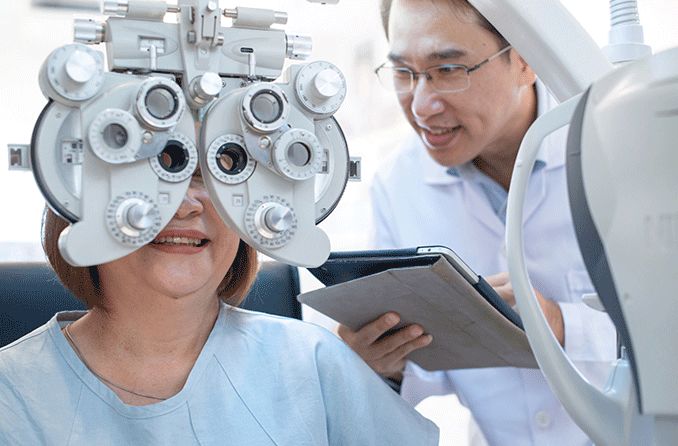Optometry

Optometry is a medical field that involves caring for eyesight and eye health.
Optometry tends to cover more-common eye problems with more-straightforward diagnoses and treatments. Serious or complex conditions, in addition to eye-related surgeries, are usually handled within ophthalmology.
The four big refractive errors — nearsightedness, farsightedness, astigmatism and presbyopia — make up the foundation of optometry. Prescription eyeglasses and contact lenses are the most common treatments for refractive errors.
Someone who practices optometry is known as a doctor of optometry, which can be abbreviated as OD. But a doctor of optometry is usually just called an optometrist.
An optometrist is like a primary care physician for the eyes. Their goal is to help patients see clearly and care for minor problems that come up along the way. Like a primary doctor, they will refer a patient to a specialist if a problem is outside their range of care.
In America, there are two leading organizations in the field of optometry: the American Optometric Association (AOA) and the American Academy of Optometry (AAO).
About 44,000 optometrists are currently practicing in the United States, according to the AOA.
What optometry covers
Optometry mostly covers the care of day-to-day eye concerns that aren’t immediately serious or sight-threatening.
In addition to others, a doctor of optometry can help detect, manage or treat the following common eye problems:
Nearsightedness, also known as myopia: A widespread vision problem that makes close-up objects appear clearly and distant ones look blurry. More than four out of every 10 Americans are nearsighted, according to the National Institutes of Health (NIH).
Farsightedness, also known as hyperopia: Another vision problem that affects visual sharpness. Farsighted people see distant objects more clearly, while nearby objects look blurry.
Astigmatism: A slightly misshapen cornea that can result in blurred vision. Astigmatism can affect one or both eyes, and can cause objects at all distances to appear blurry.
Age-related farsightedness, also known as presbyopia: A refractive error that occurs in everyone when the eye’s natural lens becomes less flexible with age — usually sometime after age 40. Hallmark symptoms include difficulty focusing on small text and nearby objects, along with worsening vision at night.
Eye infections, notably pink eye (conjunctivitis): Caused by viruses or bacteria. An optometrist can decide whether conjunctivitis needs to be treated or will go away on its own.
Eye allergies: Eye redness and irritation caused by a minor allergic reaction. Triggers can include pollen, dust mites and pet dander.
Stye: A localized infection that results in a sensitive red bump on the eyelid. Most styes surface at the base of the eyelashes, where they meet the eyelid.
Corneal abrasion: A small scratch on the surface of the cornea, often caused by things like dirt, sand or a misplaced fingernail.
Digital eye strain: A collection of symptoms caused by the overuse of digital screens.
Dry eye syndrome: A lack of sufficient tears and/or oils across the surface of the eye that can lead to varying levels of discomfort.
Optometrists aren’t limited to diagnosing the conditions they can treat. They are well-trained in spotting the warning signs of more serious disorders too, even if those problems require the help of another doctor.
In some cases, an optometrist can help a patient manage a more complex, long-term condition that was first diagnosed by an ophthalmologist. Glaucoma, macular degeneration and amblyopia (lazy eye) are examples of conditions that can be managed by a doctor of optometry to a certain extent.

